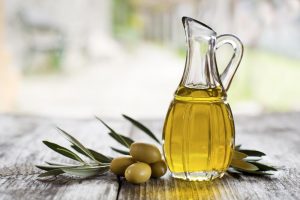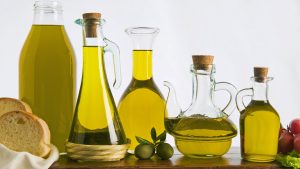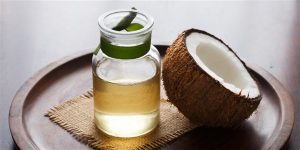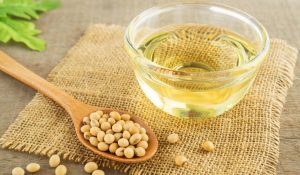Cooking oils are a kitchen staple. With so numerous on the racks – from coconut to olive, vegetable to canola, avocado to rapeseed oil – how would we know which ones to utilize, and on the off chance that we ought to evade any by and large? Oils utilized for cooking will in general get their name from the nut, seeds, natural products, plants or grains they’re removed from, either by strategies for squashing, squeezing, or preparing. They’re described by their high fat substance, including immersed fat, monounsaturated and polyunsaturated unsaturated fats. All fat atoms are made of chains of unsaturated fats, which are either held along with single securities or twofold securities.
Table of Contents
Is there any Similarity in different types of cooking oil?
On a very basic level, all oils are made of fat and are fluid when put away at room temperature. Fats are fundamental to building sound nerves and skin, and to helping us assimilate supplements. In cooking, fats are utilized for heat move, to brown food, and for flavour. You’ll need to pick your oil dependent on what temperature you’ll be cooking at and what flavour you’re focusing on. You may have known about oil’s smoke point this is the temperature its fats begin to separate and structure unfortunate mixes. In the event that you’ve hit this point, you’ll see and smell the smoke, and the oil will burn what you’re cooking.
Do all different types of cooking oil taste the same?
Some are unquestionably more grounded, and some more nonpartisan. At the point when you taste those claims to fame nut and seed oils some of which are enhanced with extra spices like garlic, you’ll certainly know it’s there, while the vegetable and canola oils are more unobtrusive.
How to cook properly with different oils?
At the point when oils are presented to oxygen, warmth, and light, they go foul and begin to frame poisonous mixes. You can smell it you’ll unscrew the container and force. You’d have the option to taste rancidity in oil, as well. On the off chance that your oil is smelly, dispose of it. By then, its healthy benefit is gone, and expending it represents the potential for long haul wellbeing impacts. Appropriate capacity can draw out the time span of usability of your oils. Keep olive, canola, and coconut oils in a cabinet, away from heat and light. Seed and nut oils do best in the refrigerator.
10 Types of Cooking Oil
Presumably the most widely recognized is vegetable oil. It’s normally gotten from soy or corn, and it’s what a great deal of eateries uses for cooking. At that point you have olive oil, coconut oil, avocado oil, and bunches of strength nut and seed oils, which come in unmistakable flavors like sesame, pecan, or hazelnut. These are only the big deal.
1. Olive Oil

Useful for heart, cholesterol and stomach related purposes, olive oil is gradually making advances into the culinary circuit as one of the most cherished oils. Aside from its umpteen medical advantages, this Mediterranean marvel oil is additionally connected with chopping down despondency and improving cerebrum wellbeing for the respectable measure of omega-3 and omega-6 unsaturated fats that it contains.
In spite of being considered as perhaps the most beneficial oil, it has raised numerous eyeballs for its utilization in cooking. Many accept that olive oil is inadmissible for cooking due to unsaturated fats, the characteristic properties of fats and oils may get changed. Turns out, you can undoubtedly utilize olive oil for gentle cooking, and cooking in olive oil may likewise give numerous medical advantages.
2. Extra Virgin Olive Oil

In all actuality: obviously, you can cook with additional virgin olive oil. One needs to just glance at the Mediterranean kitchen and its conventions in cooking to see part of the clarification. Greeks, Italians and Spanish have been cooking with additional virgin olive oil for a considerable length of time long and we don’t perceive any unfriendly impacts emerging from these Mediterranean kitchens – which Northern European nations are so attached to.
What additional virgin olive oil isn’t too appropriate for is profound fricasseeing, which commonly requires a temperature at the fringe of additional virgin olive oil’s smoke point. This is the reason sunflower oil, rapeseed oil and even vegetable oil are more qualified for profound browning since they have higher smoke focuses, implying that you won’t help the food through the smoke point as it cooks during the broiling cycle.
3. Sunflower Oil

Cold-squeezed, grungy sunflower oil is more earnestly to discover in the US and best put something aside for vinaigrettes and other low-heat applications that can flaunt its flavors, while refined sunflower oil’s high smoke point (440 to 475°F) settle on it a strong decision for high-heat applications like browning.
Sunflower oil normally has a high extent of polyunsaturated fats that contain basic unsaturated fats, as linoleic corrosive, an omega-6 unsaturated fat with a crisscross structure, which is preferable for cholesterol levels over the straight-formed soaked fats—settling on it a decent decision for heart wellbeing and forestalling cardiovascular malady. It likewise contains nutrient E, yet the oil’s cancer prevention agent properties will in general separate during cooking (considerably more so than olive oil, with its lower smoke point!), diminishing its potential medical advantages.
4. Corn Oil

Corn oil, likewise, called maize oil, is one of the most mainstream vegetable oils available. You’ll see it in basically everything, from margarine to serving of mixed greens dressing to broiled nourishments in cafés. Corn oil contains high measures of polyunsaturated unsaturated fats (PUFAs), which lower cholesterol and should be a key piece of heart wellbeing. In any case, this oil can likewise cause irritation and harm your liver.
What’s more, as other vegetable oils, it’s connected to expanded danger of heftiness and heart disease. It’s modest, flavourless, and has a high smoke point, which settles on it a go-to decision for high-heat searing, especially profound browning. It’s likewise in margarine, serving of mixed greens dressings, magnificence items, and the sky is the limit from there. Corn oil is rich in PUFAs, and especially the omega-6 PUFA linoleic corrosive.
5. Coconut Oil

Coconut oil originates from the meat of developed coconuts reaped from the coconut palm tree. Regardless of whether it’s drinking coconut water, utilizing the oil as a lotion or popping a spoonful into preparing, the most recent few years have seen the coconut ascend to noticeable quality in kitchens and restroom cupboards. Refined coconut oil is ordinarily less expensive and improbable to have the coconutty flavour and smell. Virgin coconut oil utilizes fresher coconut and is the grungy form with a lighter taste and is supposed to be more extravagant in cancer prevention agent polyphenols.
Fat is a fundamental aspect of a solid, adjusted eating routine — it is a wellspring of basic unsaturated fats and enables the body to ingest fat-solvent nutrients, for example, A, D, E and K. In spite of the fact that reviews looking at the medical advantages of devouring coconut oil over different fats are scant, coconut oil has one prominent distinction. Coconut oil contains a high extent of a sort of fat called Medium Chain Fatty Acids (MCFAs), most remarkably as lauric corrosive. MCFAs respectably have different medical advantages including being more averse to be put away in the body as fat and all the more promptly utilized as a wellspring of vitality.
6. Avocado Oil

Avocado oil has created developing enthusiasm among buyers because of its nourishing and innovative qualities, which is confirmed by an expansion in the quantity of logical articles that have been distributed on it. Our exploration was helped out through an efficient pursuit in logical information bases. Despite the fact that there are no worldwide guidelines concerning the nature of avocado oil, a few creators allude to the boundaries utilized for olive oil, as expressed by the Codex Alimentarius or the International Olive Oil Council.
Nature of avocado oil will rely upon the quality and development of the products of the soil extraction strategy comparable to temperature, solvents, and protection. While the avocado organic product has been broadly considered, there is an absence of information about avocado oil and the potential wellbeing impacts of expending it. Based on the accessible information, avocado oil has set up itself as an oil that has an excellent healthy benefit at low and high temperatures, with various innovative applications that can be misused to assist its makers.
7. Vegetable Ghee

Ghee is margarine, stewed. It’s anything but difficult to make. It’s likewise simple to consume. Watch out for the pot. As it stews, the spread’s milk solids separate from the oil while dissipating out water. After around 15 minutes, spoon out the milk solids. What’s left is ghee: a reasonable brilliant cooking oil with a high smoke point, long timeframe of realistic usability, and extravagant notoriety. Since ghee is explained, it’s both casein and without lactose. Individuals who are authoritatively lactose bigoted (or sans lactose) eat it and summary it.
Most ghee plans teach disposing of the milk solids. Truly? Dispose of natural, grass-took care of milk solids? Throw them in a smoothie or spread them on toast. Since pungent, rich, crunchy milk solids have a place on truly tart sourdough or a dry loaf. Since there’s no water in ghee (recall, it dissipated when the spread stewed), ghee has a higher smoke point than margarine, about 465º F contrasted with margarine’s 350º F. It cooks without faltering, smoking or consuming, making it cordial for flame broiled cheddar, chilaquiles, breakfast potatoes, and that’s just the beginning.
8. Sesame Oil

Contrasted with other cooking oils accessible in the Indian market, sesame oil some way or another falls behind in prominence. We generally use it for explicit plans and not as a regular alternative. Maybe this is to do with its generally low smoke point rather than the utilization of high warmth while planning Indian dishes. Sesame oil is accessible in two unique assortments – light sesame oil which is separated from aged sesame seeds, has a truly golden shading and can be utilized for profound searing; and dull sesame oil which is extricated from simmered sesame seeds, is tannish in shading and can be utilized for pan-searing and pickle making.
It is supposed to be useful for the skin, and frequently utilized for kneads as it infiltrates profound into the skin to give sustenance and alleviates pressure. It is viewed as useful for the hair too, and furthermore utilized as a transporter oil for various beautifiers. While it requires a bit of ‘becoming accustomed to’, sesame oil is one of a kind in its qualities and once you begin cooking with it, you will discover that it tends to be utilized from various perspectives to tidy up your regular dishes. Other than including an additional portion of flavor, it will likewise give a solid turn to your food.
9. Walnut Oil

Pecans and their oils are incredible wellsprings of omega-3 unsaturated fats. The vast majority of the exploration on the medical advantages of pecans has zeroed in on utilization of the nut itself, despite the fact that enthusiasm for pecan oil has become in the course of the most recent decade. The medical advantages of pecans and pecan oil are comparable if the oil is foul, new (half year time span of usability), and uncooked. Be that as it may, the serving size of pecan oil is not exactly the measure of pecans expected to get a similar healthful advantage.
Moreover, normal pecan oil utilization decreased fatty oil levels 19 to 33% in a 45-day study. The medical advantages of pecans were first recognized in 1937 when scientists found that they were a noteworthy wellspring of nutrient C. Throughout the most recent 70 years, various different examinations that assessed the impacts of pecan and pecan oil utilization on mortality, sickness predominance, and illness hazard factors have been performed. It has now been entrenched that eating pecans consistently has unmistakable medical advantage. The hugest of which being a decrease in the danger of coronary illness.
10. Soyabean Oil

The smoke purpose of an oil is the temperature at which fats begin to separate and oxidize. This outcomes in the arrangement of unsafe, sickness causing mixes called free radicals, which can cause oxidative worry in the body, Soybean oil generally comprises of polyunsaturated unsaturated fats, which are a heart-solid kind of fat that is related with a few advantages. Omega-3 unsaturated fats have been connected to various medical advantages and assume a basic part in heart wellbeing, fatal turn of events, cerebrum capacity, and insusceptibility.
Soybean oil can frequently be spotted on the fixing arrangements of healthy skin serums, gels, and moisturizers — and in light of current circumstances. In spite of the fact that soybean oil has been related with some medical advantages, devouring soybean oil normally may contrarily influence by and large wellbeing. Soybean oil has a mellow, unbiased taste that can fit flawlessly into about any formula that calls for cooking oil. It works particularly all around matched with vinegar and a scramble of salt and pepper to make a simple serving of mixed greens dressing.
The Ultimate Guide for Cooking Oils
1. Equivalent when estimating calories
Notwithstanding what sort of oil you use, oil is ordered healthfully as a fat. At nine calories for every gram, fats are unmistakably more calorie-thick than sugars or protein, the two of which have four calories for each gram. Taste could assist with forming your response to which oil to use in cooking.
2. Not equivalent when estimating impact on wellbeing
While picking a cooking oil, consider extra-virgin olive oil for heart wellbeing. It has the most minimal oxidation pace of cooking oils. Oxidation advances free radicals, synthetics that are profoundly responsive and can possibly harm cells, including harm that may prompt disease.
3. Do Ensure it is new
Old oil is a harbour with the expectation of complimentary radicals. At the point when you purchase a wide range of assortments of oil for various plans, at that point store them for significant stretches in your kitchen, the oils oxidize after some time and grow free radicals.
4. Do utilise in the right direction
In case you’re eating well fats by dunking your crusty bread in olive oil or browning nourishments in canola, you aren’t getting the greatest value for the money. Use oil rather to separate, broaden and implant seasons or make new ones.
In conclusion, A few cooks have a lot of choices with regards to picking which kind of oil to sauté, heat and sprinkle with. A few, similar to olive oil, are notable, and others, similar to avocado or coconut oil, are less recognizable. Which oil is directly for you? That relies generally upon the kind of cooking you’re doing. An oil’s smoke point, which is the moment that oil begins consuming and smoking, is one of the most significant interesting points. On the off chance that you heat oil past its smoke point, it hurts the flavour, however huge numbers of the supplements in the oil corrupt—and the oil will deliver destructive mixes called free radicals.

